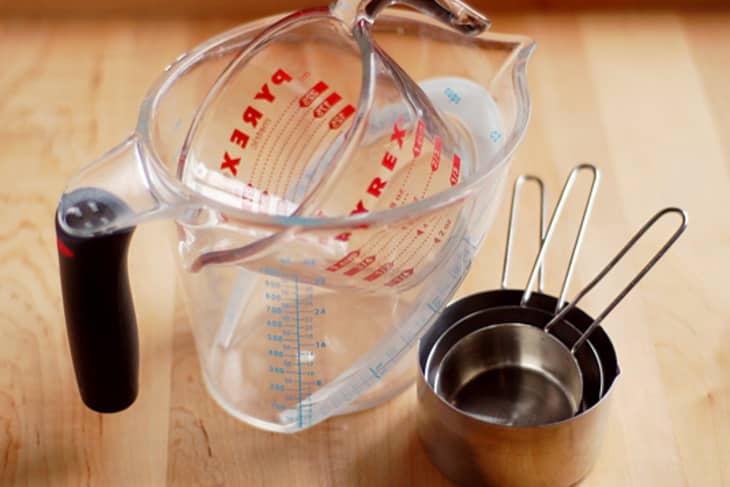Kitchen Tools: Need Both Dry and Liquid Measuring Cups?
As part of our ongoing efforts to minimize redundancy and conserve space in our small kitchen, we’ve often thought about keeping either our dry or our liquid measuring cups and ditching the other set. Ultimately, we think it’s worth keeping both, and here’s why!
It’s true that if you measure a cup of rice with a dry measure and pour it into a liquid measuring cup, it will come right up to the one-cup mark. This also works if you measured a cup of water and then poured it into a dry measuring cup.
But in our experience, the real issue is how easy it is to use each kind of cup with the specific kind of ingredient.
It’s simply easier and more accurate to measure dry ingredients in a measuring cup where you can fill the cup and then sweep the excess off the top to get an even measure. And it’s easier to measure liquids in a liquid measuring cup where the line of measurement is below the lip of the cup. This allows us to get right up to the measurement mark without spilling over and also helps us transfer the liquid without sloshing.
Of course, we could get rid of all our measuring cups and just go by weight. That would truly be the most accurate!
Do you think both dry and liquid measuring cups are necessary, or do you get by with only one set?
Related: Essential Kitchen Tools: A Round-Up of the Basics
(Image: Emma Christensen)
